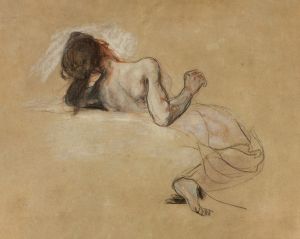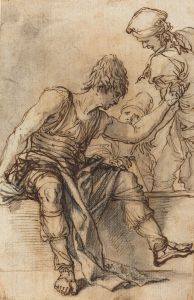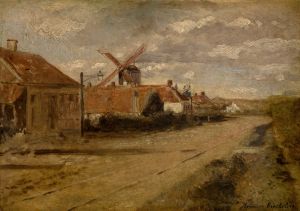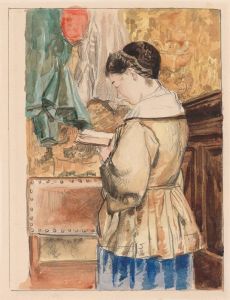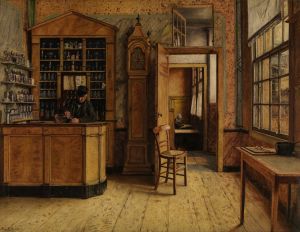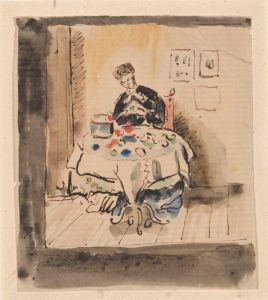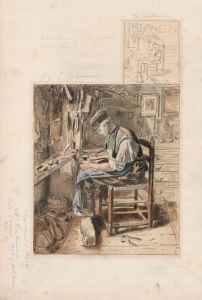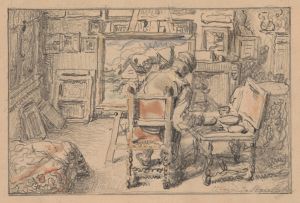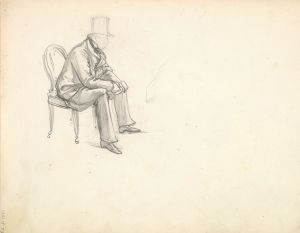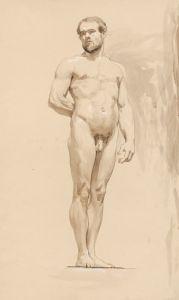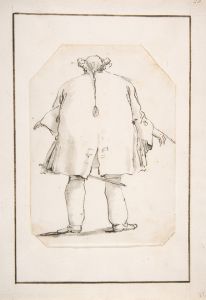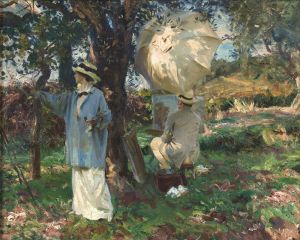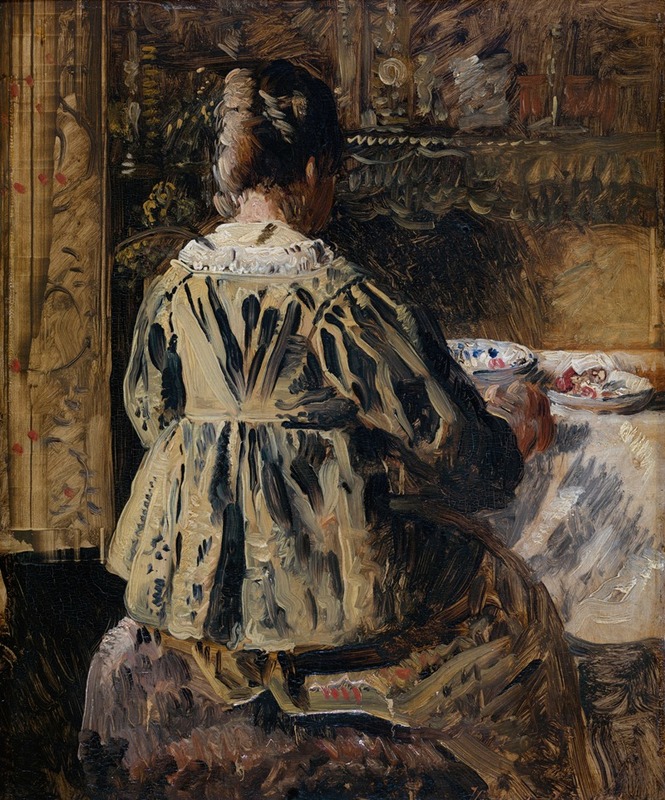
The Meal or Woman Seen from the Back
A hand-painted replica of Henri de Braekeleer’s masterpiece The Meal or Woman Seen from the Back, meticulously crafted by professional artists to capture the true essence of the original. Each piece is created with museum-quality canvas and rare mineral pigments, carefully painted by experienced artists with delicate brushstrokes and rich, layered colors to perfectly recreate the texture of the original artwork. Unlike machine-printed reproductions, this hand-painted version brings the painting to life, infused with the artist’s emotions and skill in every stroke. Whether for personal collection or home decoration, it instantly elevates the artistic atmosphere of any space.
Henri de Braekeleer (1840-1888) was a Belgian painter known for his detailed and realistic depictions of everyday life. One of his notable works is "The Meal or Woman Seen from the Back," which exemplifies his meticulous attention to detail and his ability to capture the quiet, introspective moments of domestic life.
"The Meal or Woman Seen from the Back" is an oil painting created by de Braekeleer in the latter half of the 19th century. The painting portrays a woman seated at a table, viewed from behind, as she partakes in a meal. The setting is a modest, well-lit interior, typical of the domestic scenes that de Braekeleer often depicted. The composition is carefully constructed, with the woman's figure forming the focal point of the painting, drawing the viewer's eye into the scene.
De Braekeleer's technique is characterized by his use of light and shadow to create a sense of depth and realism. In "The Meal or Woman Seen from the Back," he employs a soft, diffused light that gently illuminates the room, highlighting the textures of the woman's clothing and the objects on the table. The artist's attention to detail is evident in the intricate rendering of the furniture, the table setting, and the various elements of the room, which together create a rich, immersive environment.
The painting reflects de Braekeleer's interest in capturing the quiet, contemplative moments of everyday life. The woman's posture and the serene atmosphere suggest a sense of introspection and solitude. This focus on the ordinary and the intimate is a hallmark of de Braekeleer's work, setting him apart from many of his contemporaries who often favored more dramatic or grandiose subjects.
Henri de Braekeleer was part of a family of artists; his father, Ferdinand de Braekeleer the Elder, was also a painter, and his uncle, Henri Leys, was a prominent figure in the Belgian art scene. De Braekeleer was influenced by the works of the Dutch Golden Age painters, particularly Johannes Vermeer, whose meticulous attention to detail and use of light can be seen in de Braekeleer's own work.
Throughout his career, de Braekeleer struggled with periods of mental illness, which affected his productivity and output. Despite these challenges, he produced a significant body of work that has been recognized for its technical skill and emotional depth. "The Meal or Woman Seen from the Back" is a testament to his ability to find beauty and meaning in the simple, everyday moments of life.
Today, Henri de Braekeleer's works are held in various public and private collections, and he is regarded as an important figure in 19th-century Belgian art. His paintings continue to be appreciated for their quiet elegance and their ability to capture the essence of domestic life with sensitivity and precision. "The Meal or Woman Seen from the Back" remains a fine example of his artistic vision and his contribution to the genre of interior scenes.





